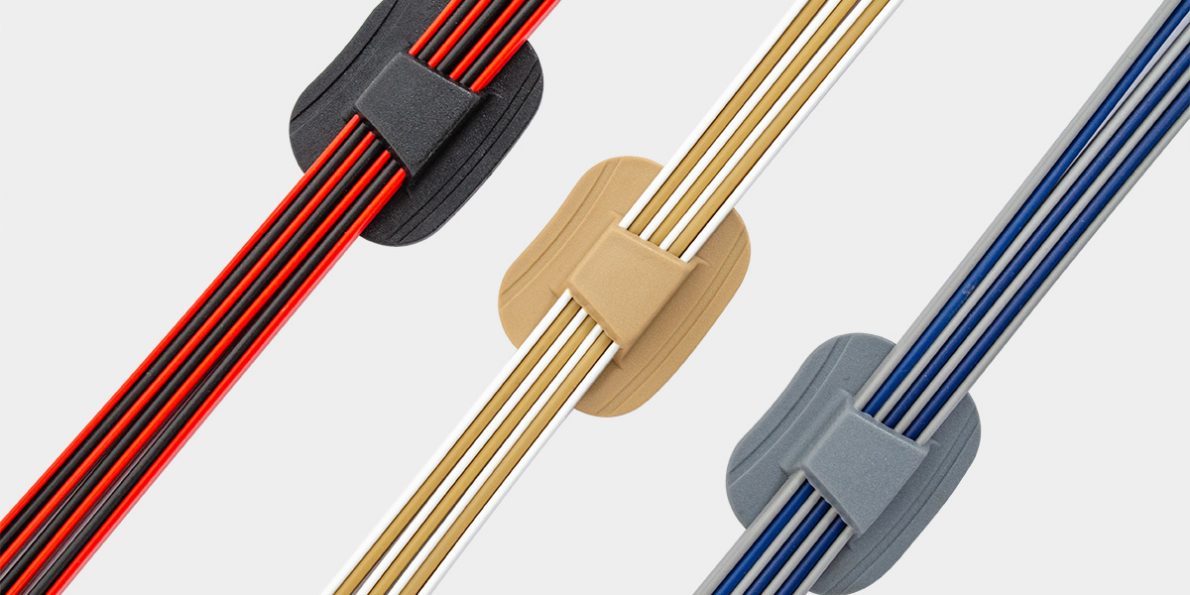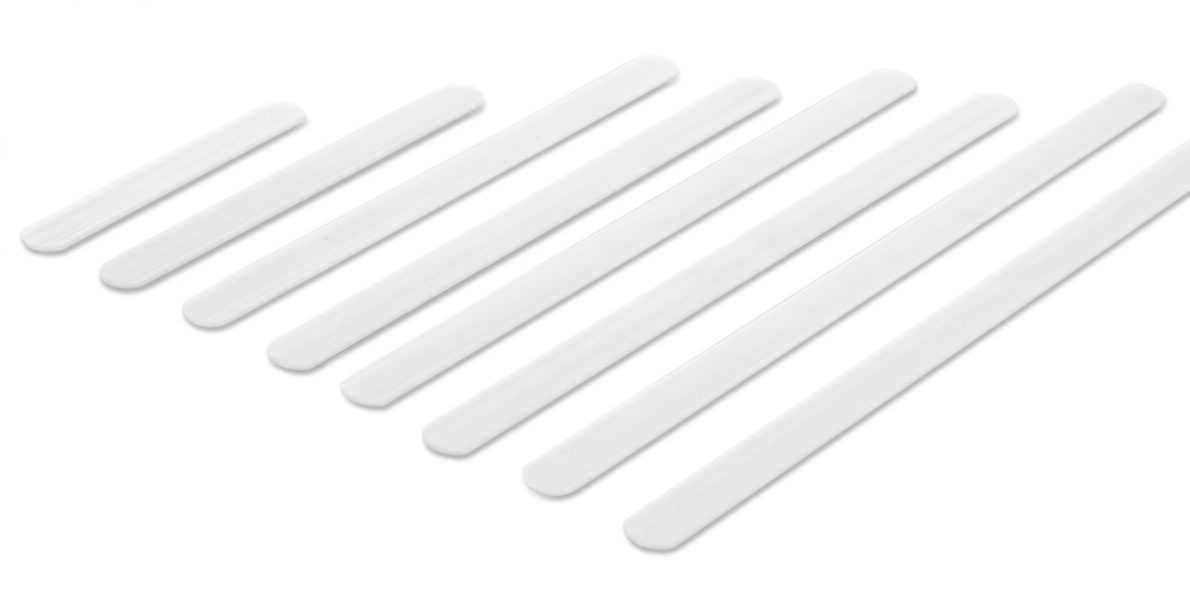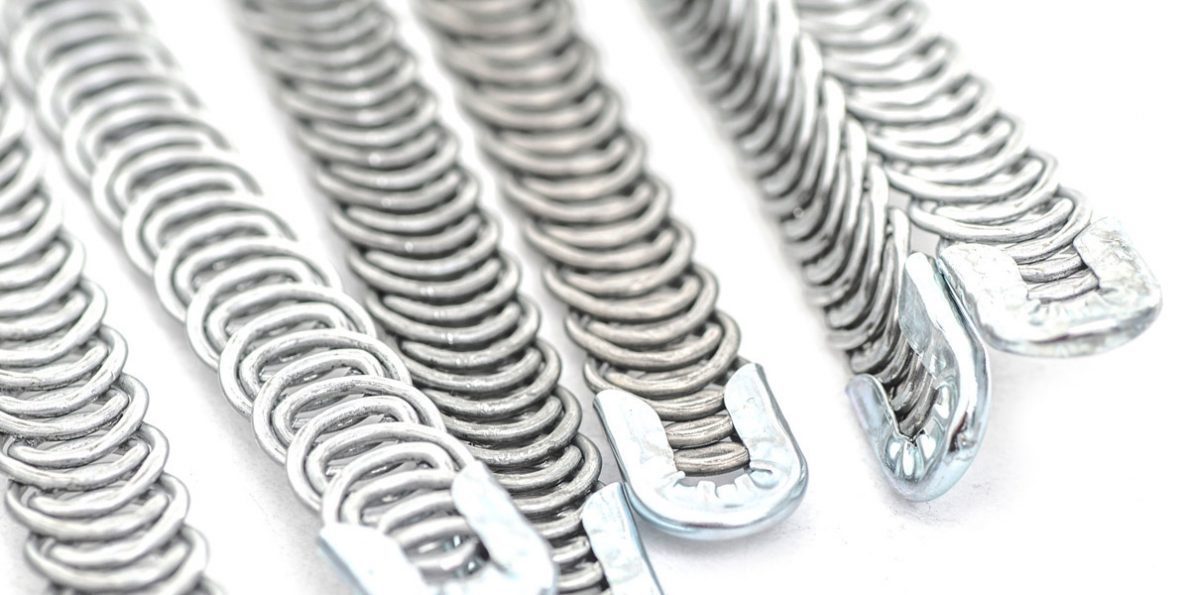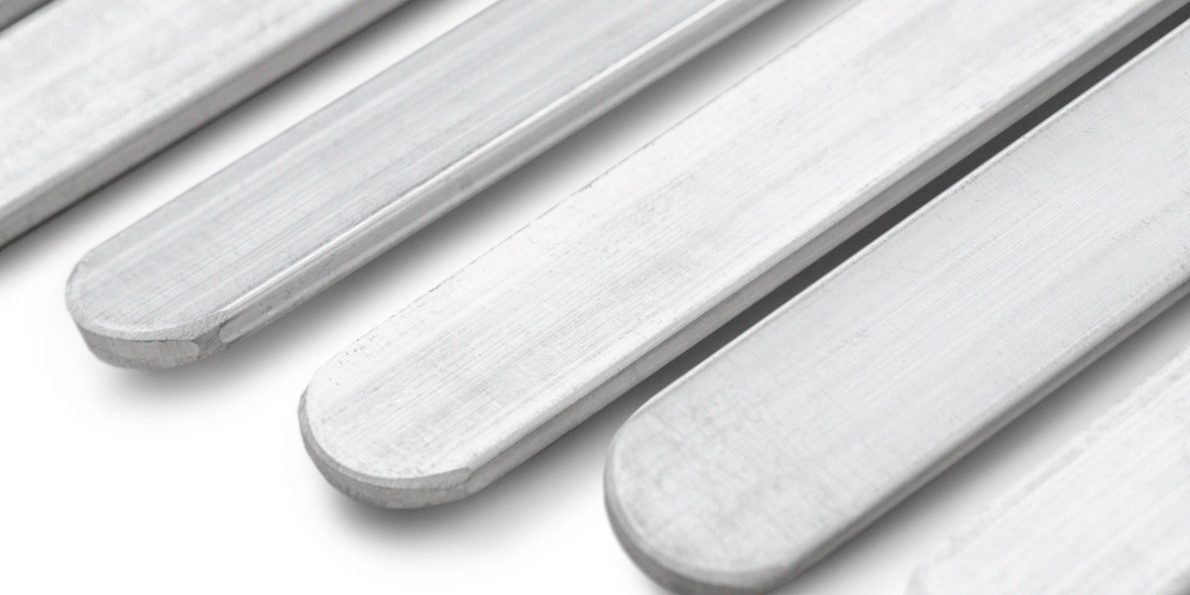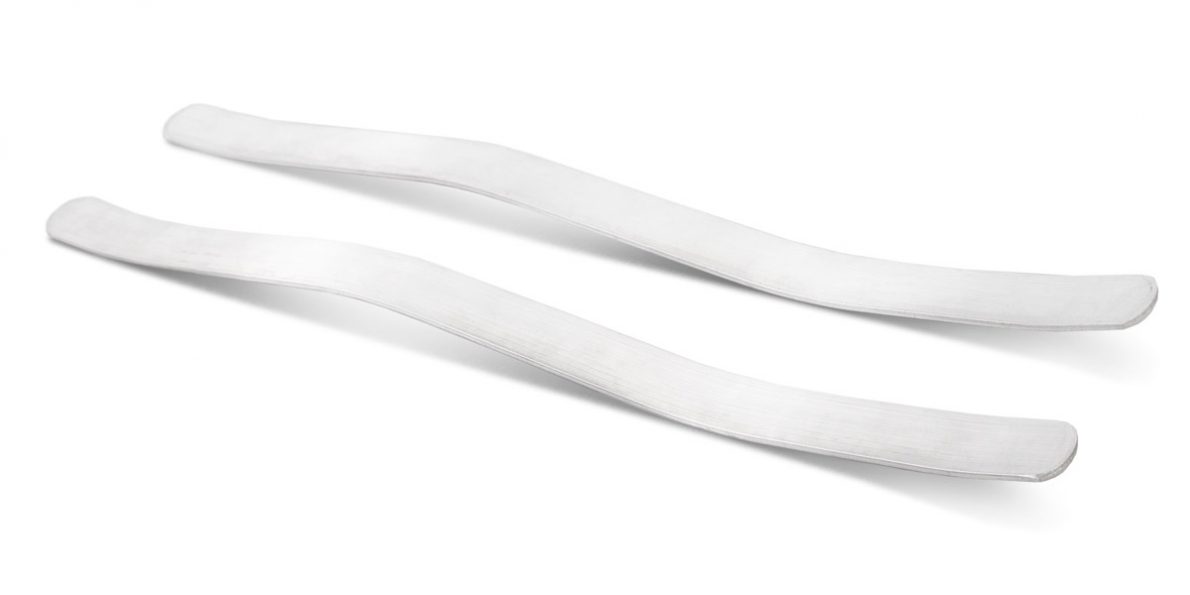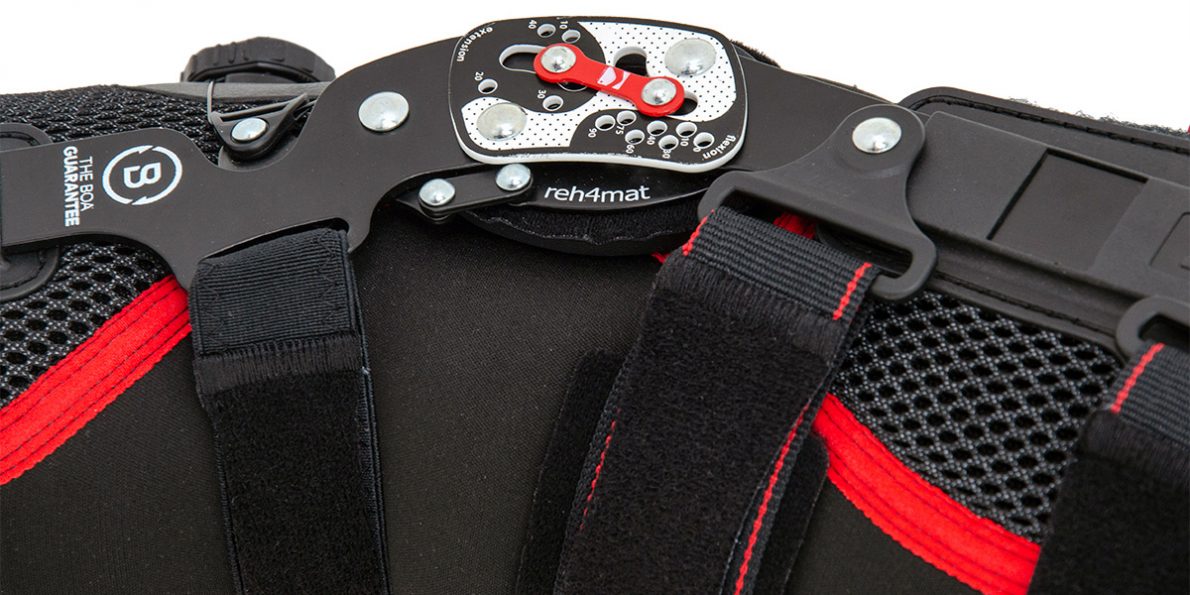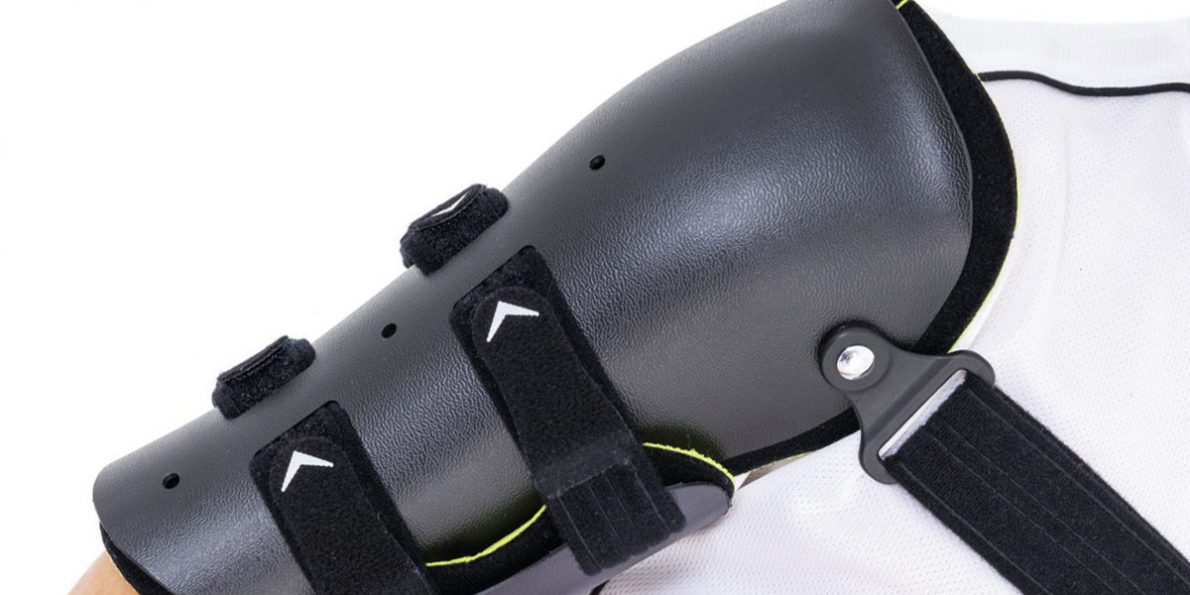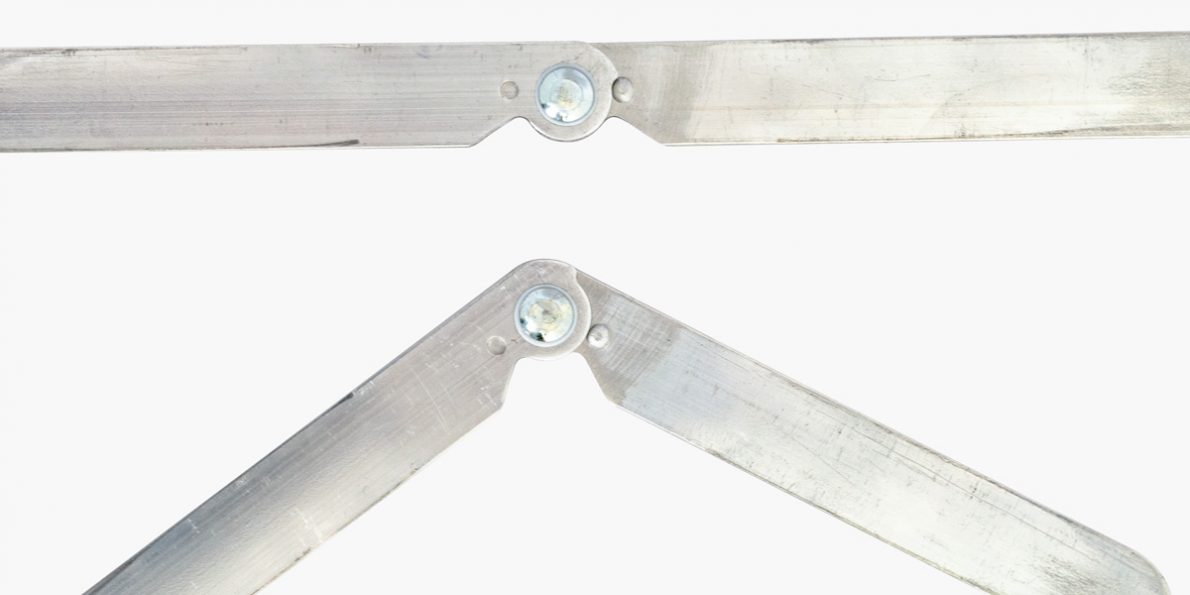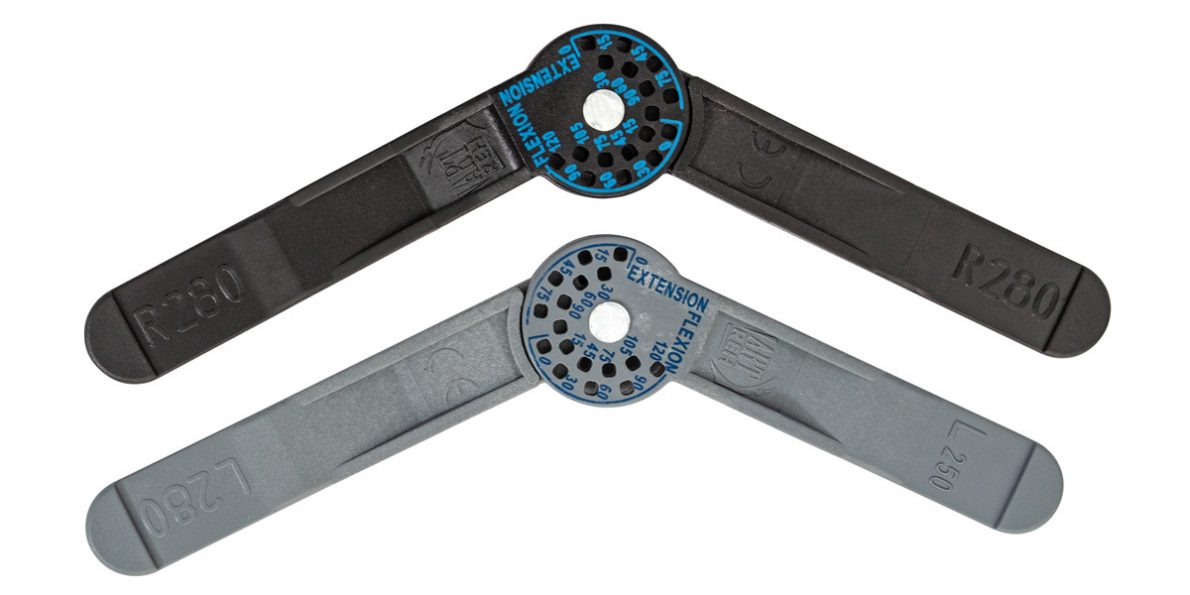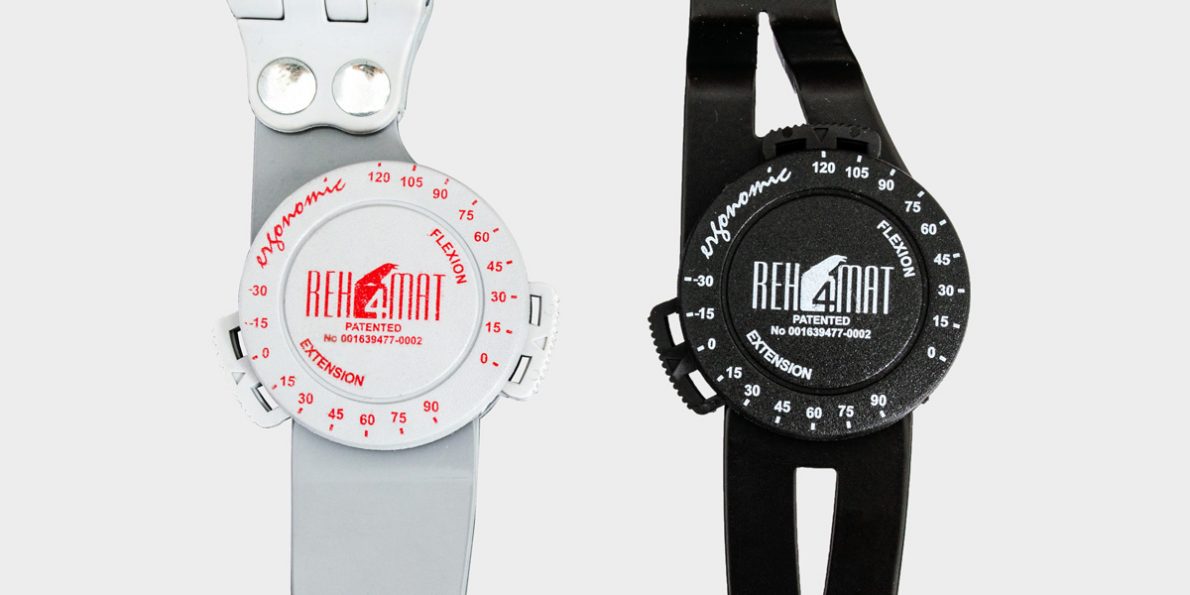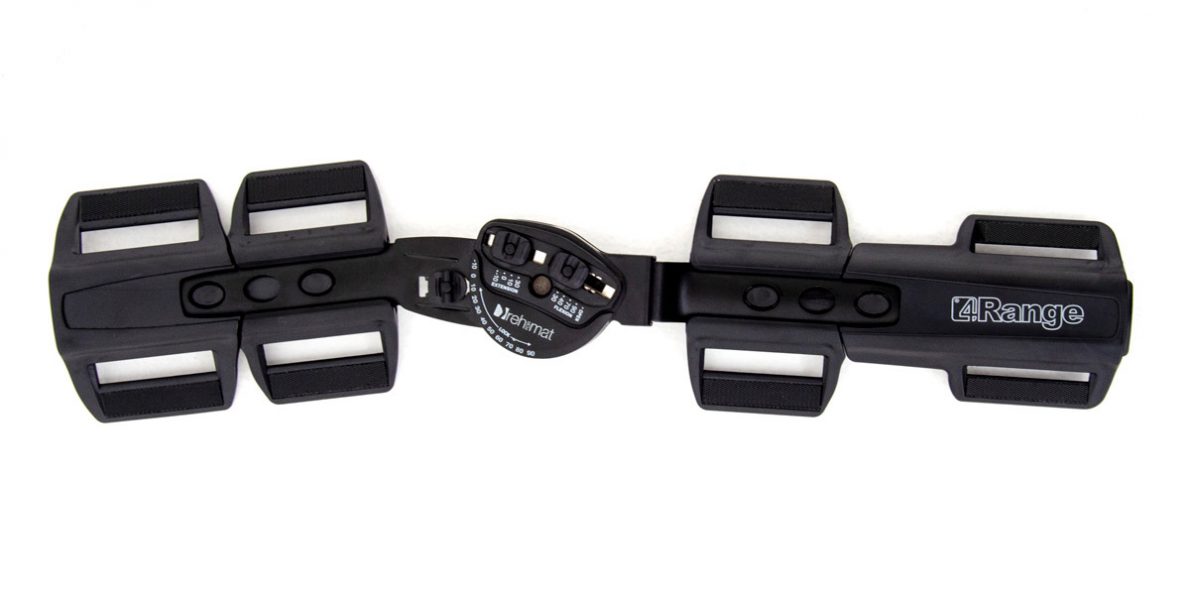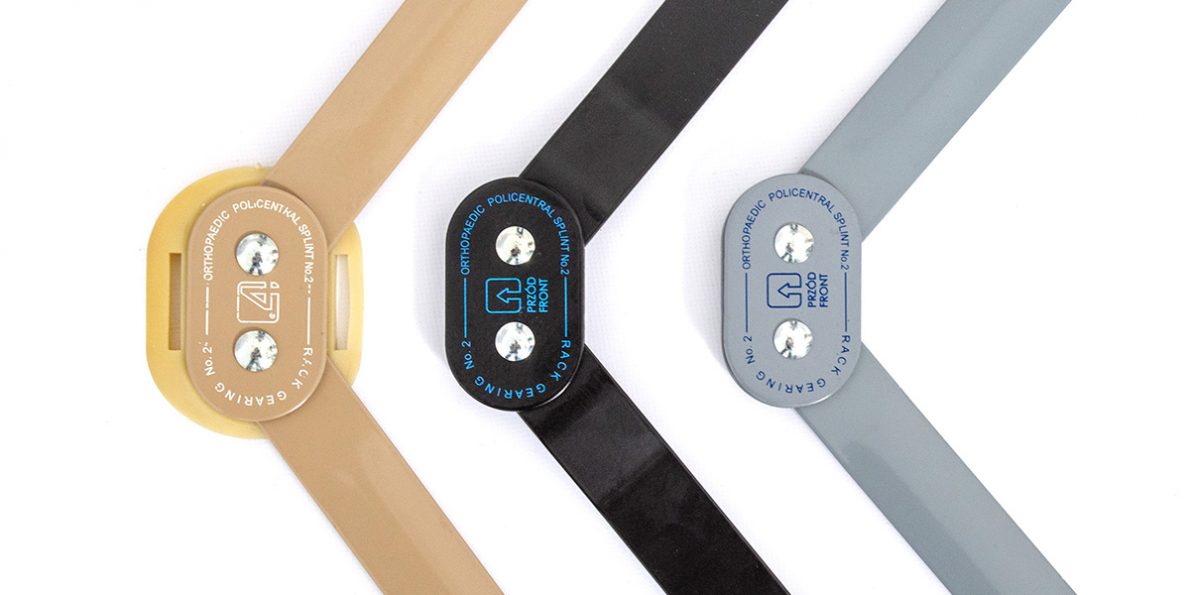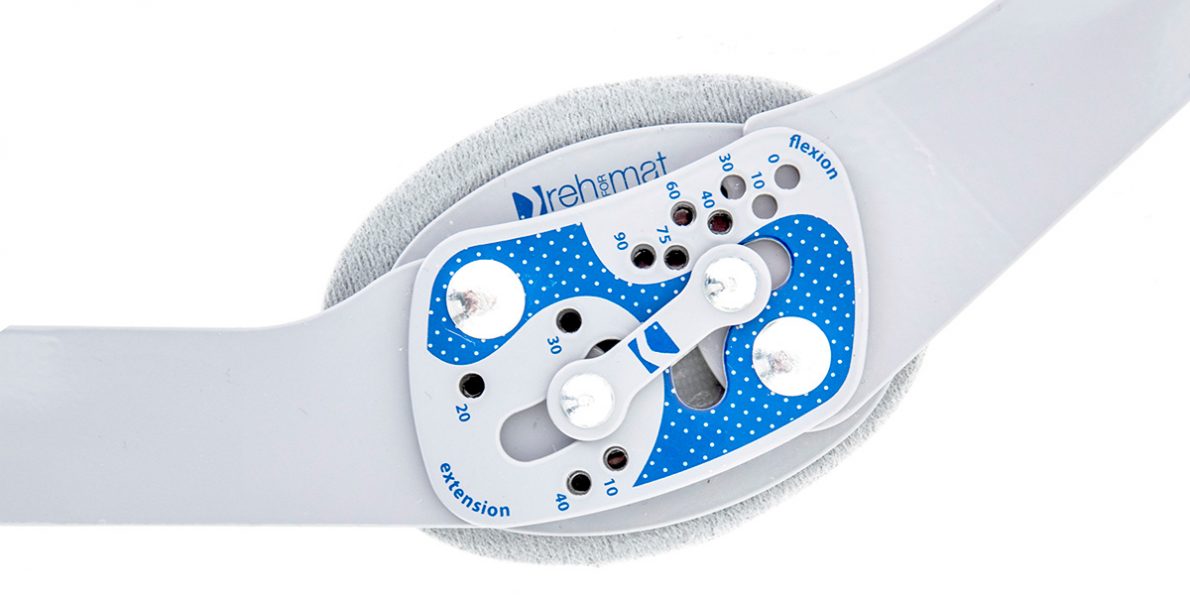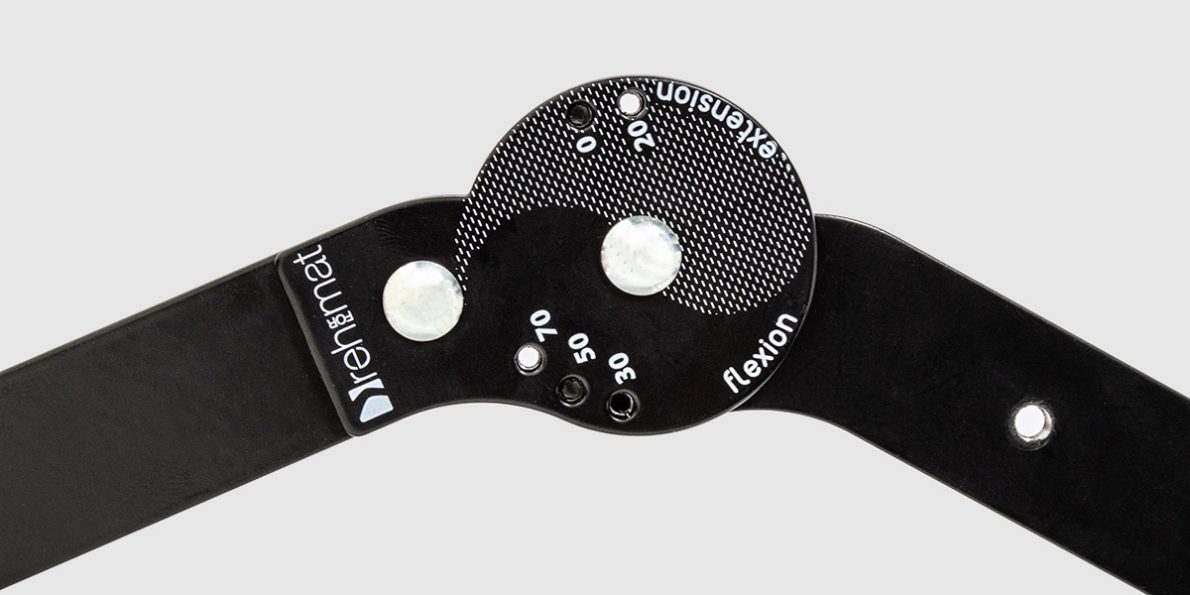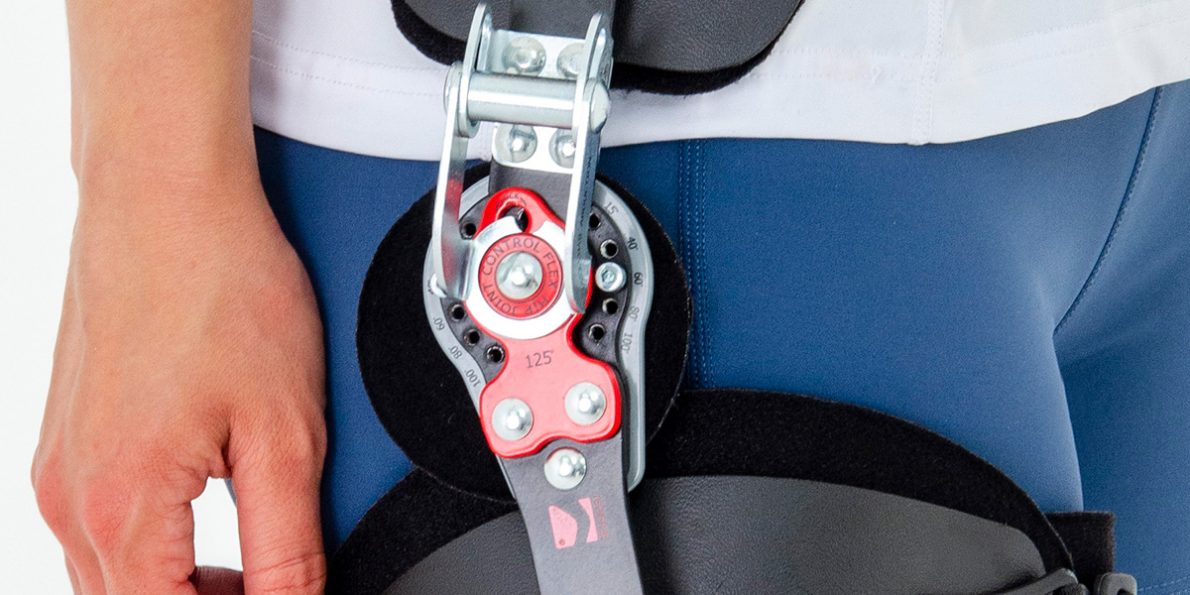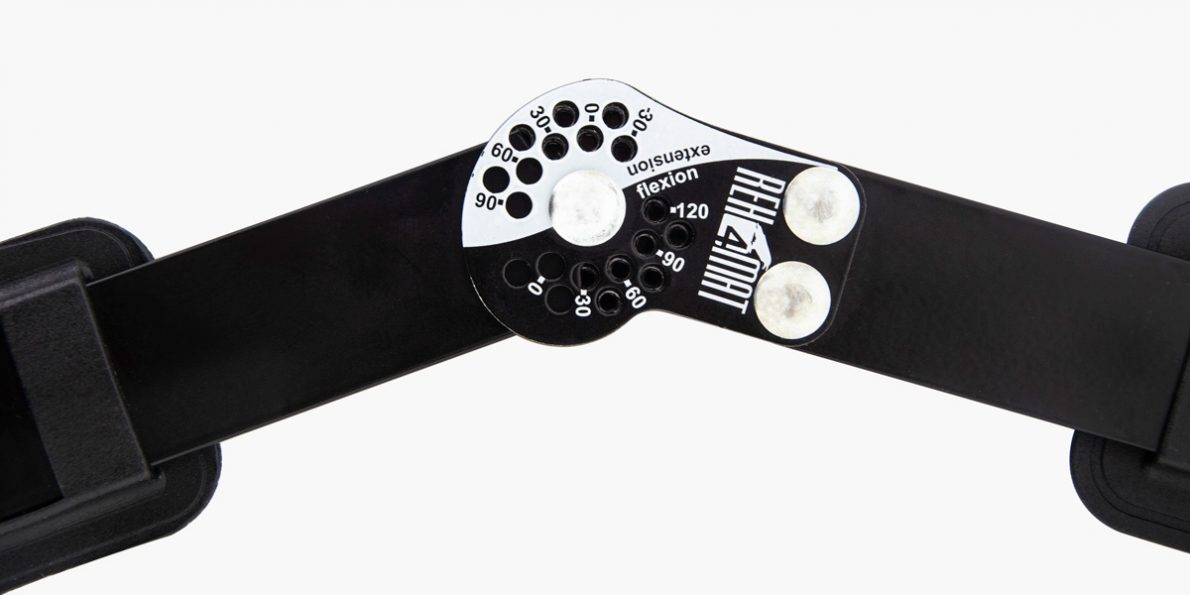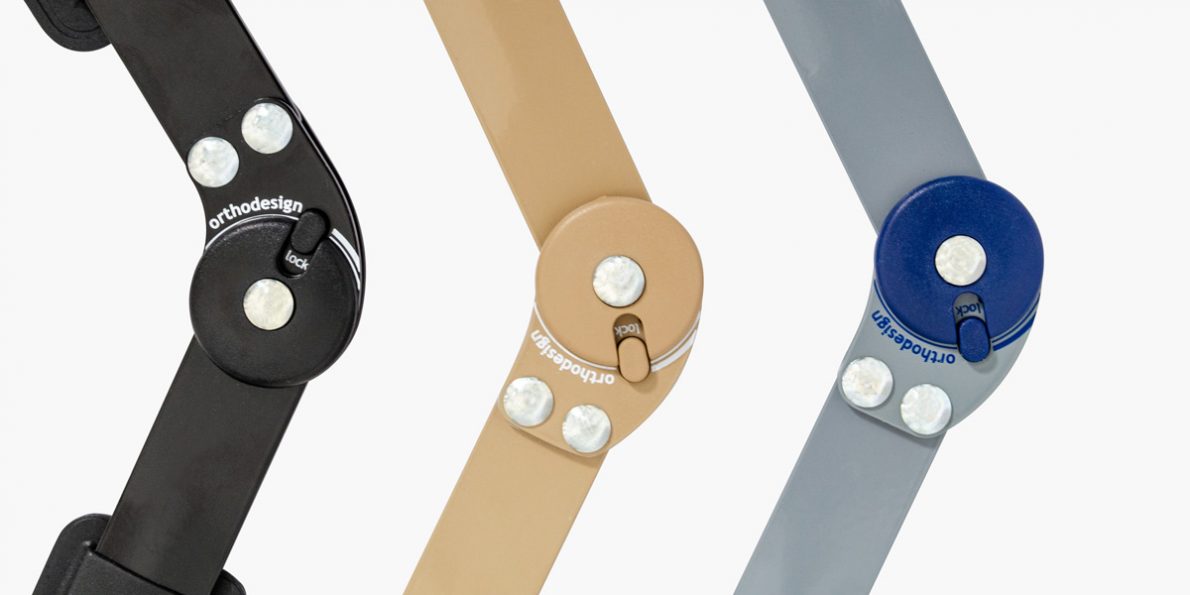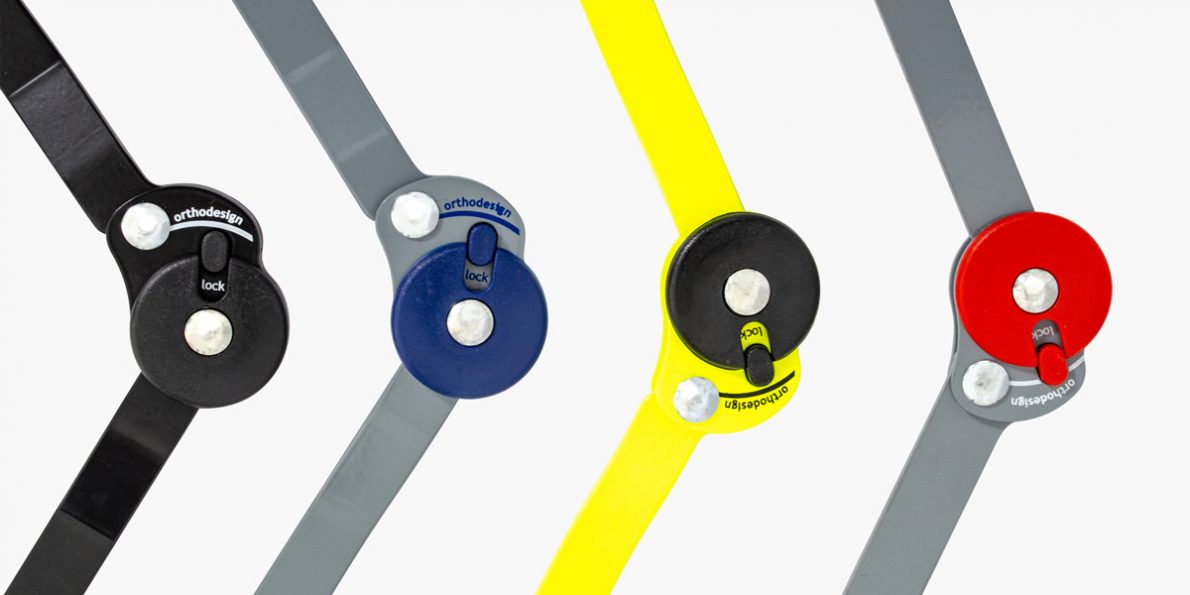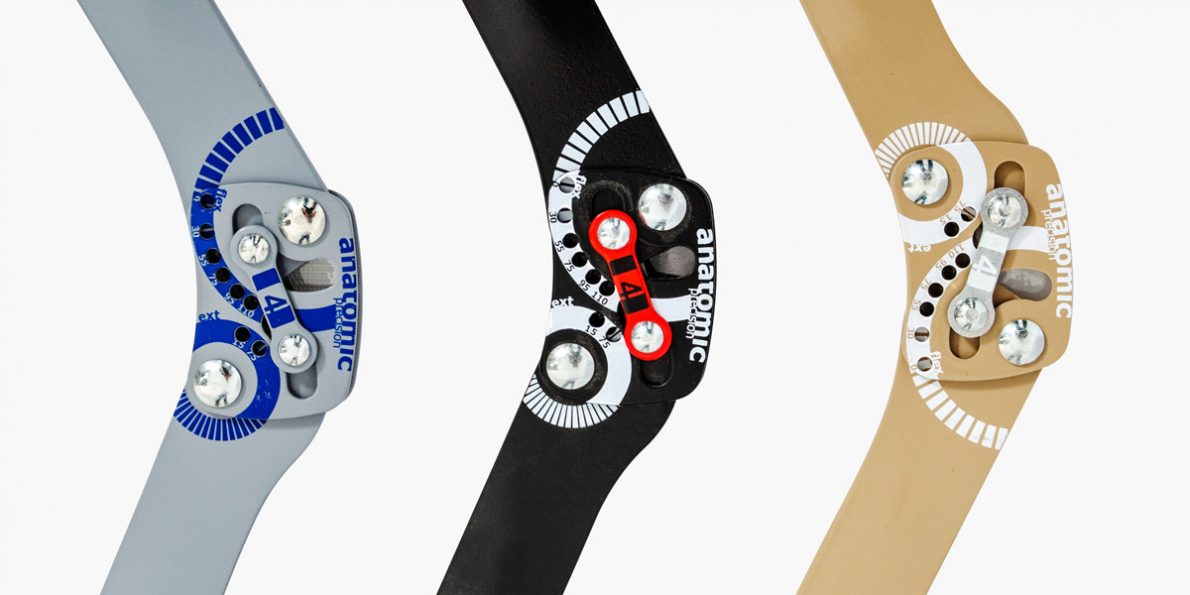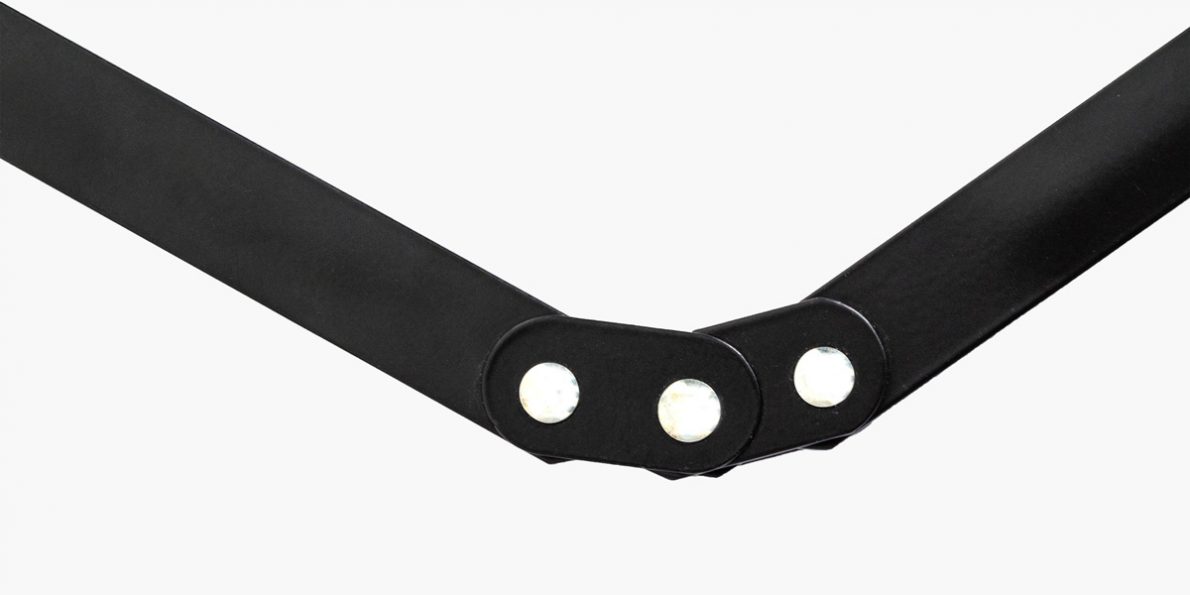Range of motion adjustment
Reh4Mat Company in brace’s production uses a few types of orthopaedic splints. Every splint is made of high quality of durable covered sanding aluminium, which is neutral for sweat and salt. The splints don’t need the patient activity. Lower part of the splints has special rear profile what provides anatomic limb stabilization. In our splints we use carbon fibers to make them more durability and comfortable.
The splints in short knee braces and elbow braces are universal and fit for both limbs. The long lower limb braces have anatomic profiled splints, so these braces are for right or left leg.
All of our splints have lightly plasticity what allows to fit it to limb by physician or physical therapist.
Leaf spring hinges
Leaf spring hinges are made of high quality alloy of metal and plastic. This construction provides anatomic knee motion with excellent lateral knee stabilization.
Plastic stays
They come in various widths and thicknesses, are made of various types of plastics, such as polyamide, ABS or acrylic, and these features determine their stiffness.
Spiral boning
Our orthopedic spiral boning is a thin wire, coiled into a spring and flattened. We use boning of various widths and wire thicknesses, which determines the strength of their stabilization.
Aluminum steels
Aluminum steels are made of a special aluminum alloy that guarantees proper stiffness with minimal weight. They have rounded ends to prevent the damage of the product and come in various widths and thicknesses…
Orthopedic stays
Orthopedic stays are made of special spring steel, covered with a plastic coating and have rounded and protected ends. They can come in various widths and thicknesses as well as different hardness…
2RA-ACL Precision System
System 2RA-ACL Precision makes it possible to control multidimensional movement of knee joint. This system consists of two splints 2RA and under-knee belts thanks to which femoral and tibial epiphysis do not excessively shift to each other in sagittal plane…
Shoulder shells
Shoulder shells are anatomic-shaped 3D orthopedic system made of low profile ABS which maintains the shape of user’s body. The system consists of external and internal arm shell. The shells are equipped with swivel buckles and cut-outs for circumferential straps. The shells have Velcro fasteners on the inside, where you can attach soft pressure relief cushions 3D.
Splint 1
Splints (1) – single axis orthopaedic splints, used mainly in all types of knee braces. They provide excellent frontal stabilization, maintaining the low weight simultaneously…
Splint 1R
1R splints – single axis orthopedic splints used in all knee joint and upper limb braces, where apart from adjustment of the flection and extension angle, high lateral stabilization of the joint is not required, but important if low weight of the brace. Due to the low weight the splints are successfully used in all braced for children…
Splint 1RE
Splints 1RE – single axis orthopedic splints, used mainly in knee joint, upper limb and hip joint braces. The characteristic quality of this splint is, apart from wide range of motion adjustment in every 15 degrees, is also hyperextension adjustment in the secured range of -15 and -30 degrees…
Splint 1X
Uniaxial orthopedic splints with adjustable joint mobility and the possibility of complete blocking of movable objects in the range from -10 to 90 degrees.
Splint 2
Splints [2] – double-axis polycentric splints equipped with rack and pinion, which reflects the anatomic movement of the knee joint. It is made of high quality aluminium alloy, with durable sanded cover, which protects the splint from influence of sweat and salt. Splint is equipped with specially shaped silicone insert to stabilize the splint and additionally release stress from the knee joint.
Splint 2R
Splints 2R – double axis polycentric splints, with rack gear which reflects the anatomic knee movement. Such splints are used in all knee joint braces where apart from angle adjustment lateral joint stabilization is also important…
Double axis splint 2RP
Double axis splint 2RP is the orthopaedic splint that reflects anatomic knee movement while flexion. The drop locks do not change their position relative to the axis of a knee joint…
Single axis splint 1RP
Single axis splint 1RP is designed to work in very heavy conditions and allows for transfer loads. This type of splint is primarily used in knee orthoses, where strong lateral stabilization of the knee joint and precise regulation of its mobility are essential…
Splint SAFE HIP
SAFE HIP SPLINT – it is a light, universal and very strong orthopedic splint designed for hip joint orthoses. The splint is perfect for use after hip surgery, it controls both the angle of hip flexion and abduction of the lower limb…
Splint 1R mini
Splints 1 R (mini) – are 1-axial orthopaedic device, which is mostly in braces, where splints are closed in special sides pockets. It is used also when the brace’s low weight is very important. Splints 1 R (mini) are made of high quality aluminium hot covered by special powder surface, what makes them neutral to patient’s sweat. The knee flexion and extension adjustment is made with special Allen screws in every 15° – to each brace we add special Allen key, which is necessary for this activity.
Splint 1R orthodesign
The orthopaedic splints 1R is the innovative solution with flexion and extension adjustment. The drop lock is very small (diameter: 30 mm) and provides 15° ROM adjustment…
Splint 1R orthodesign pediatric
Splint 2RA Precision
Splints 2RA Precision are a double axis anatomic splints which reflect the knee movement and during performance do not change their position towards the joint axis…
Splint 3
Splints [3] – triple-axis polycentric splints equipped with rack and pinion, which reflects the anatomic movement of the knee joint. Such splints are used in long knee joint braces, in cases where very high lateral stabilization of the joint is required. They are made of high quality aluminium alloy, with durable sanded cover, which protects the splint from influence of sweat and salt. Splints are equipped with specially shaped neoprene cover to protect the rack and pinion and prevent potential injuries.

